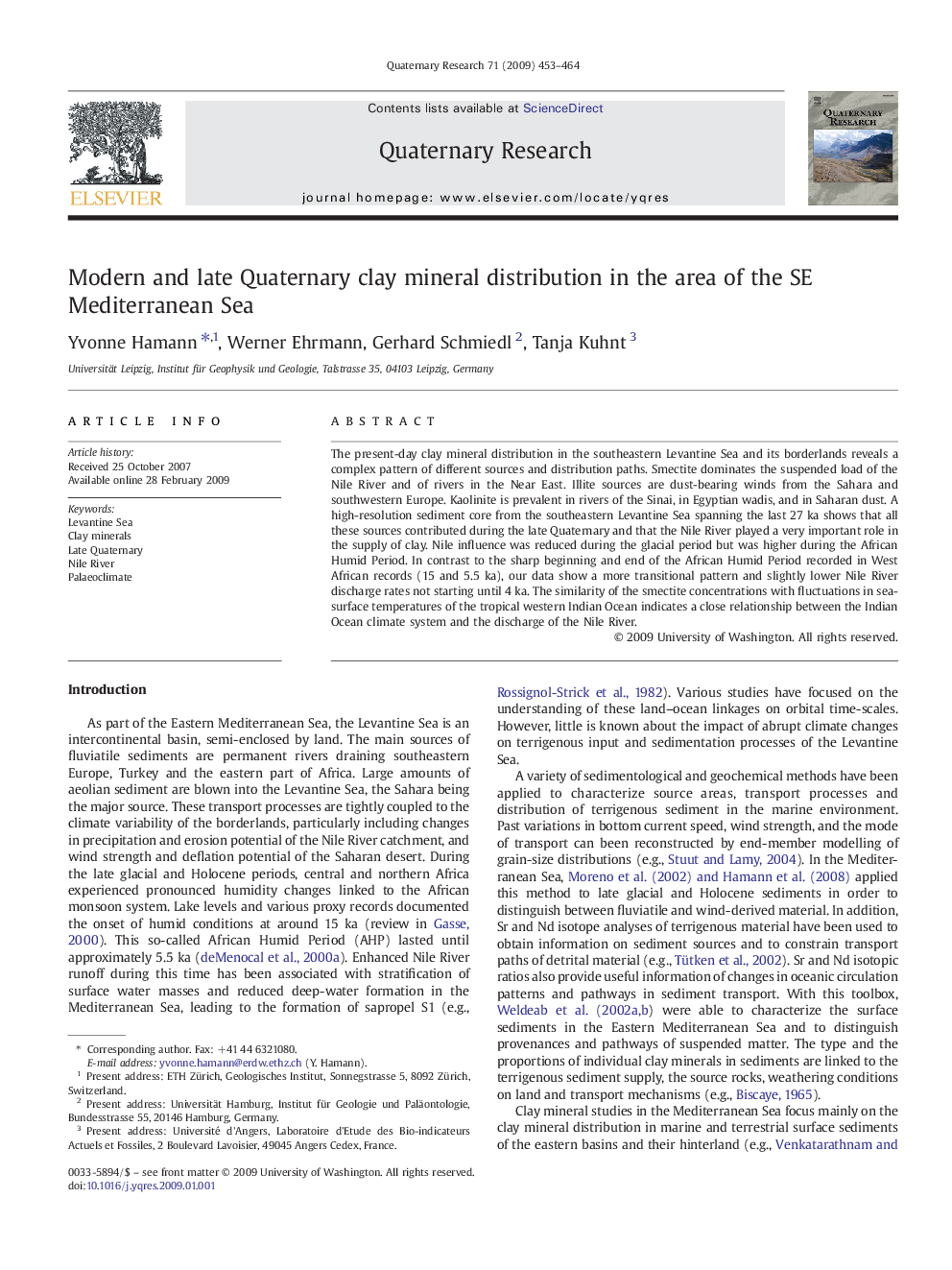| Article ID | Journal | Published Year | Pages | File Type |
|---|---|---|---|---|
| 1046011 | Quaternary Research | 2009 | 12 Pages |
The present-day clay mineral distribution in the southeastern Levantine Sea and its borderlands reveals a complex pattern of different sources and distribution paths. Smectite dominates the suspended load of the Nile River and of rivers in the Near East. Illite sources are dust-bearing winds from the Sahara and southwestern Europe. Kaolinite is prevalent in rivers of the Sinai, in Egyptian wadis, and in Saharan dust. A high-resolution sediment core from the southeastern Levantine Sea spanning the last 27 ka shows that all these sources contributed during the late Quaternary and that the Nile River played a very important role in the supply of clay. Nile influence was reduced during the glacial period but was higher during the African Humid Period. In contrast to the sharp beginning and end of the African Humid Period recorded in West African records (15 and 5.5 ka), our data show a more transitional pattern and slightly lower Nile River discharge rates not starting until 4 ka. The similarity of the smectite concentrations with fluctuations in sea-surface temperatures of the tropical western Indian Ocean indicates a close relationship between the Indian Ocean climate system and the discharge of the Nile River.
